What Lies Beneath: Equitable Planning for Historic Cemeteries In Your Community

Adrienne Burke, AICP, Esq - Community Planning Collaborative

Patricia Davenport-Jacobs, MFA HP - Terracon
Stephanie Gallagher, AICP-CEP - Terracon

Guest: Joel McEachin - City of Jacksonville

Guest: Sarah Miller – Florida Public Archaeology Network (FPAN)

Florida Planning Conference September 7, 2023
Unknown, Abandoned and Neglected Cemeteries in Florida
Burial grounds and cemeteries are our oldest and most sacred land uses Historically: More than half the population in Florida was African American through the early 1900s
They were vital to the development of Florida working in many industries: agriculture, business, construction of railroads, roads, and buildings



Blacks were generally prohibited from burial with whites well into the 1960s
Almost half of known cemeteries in the state abandoned or neglected with many more undocumented
There are potentially thousands of undocumented and abandoned African American burial sites and cemeteries in Florida
African American Cemeteries in the Headlines
Loss of African American burial sites and cemeteries in Florida is an increasing concern

Not isolated comprehensivestories,issue across the state with increased development
Everyone is asking “How did this happen and what can we do about it?”
Need to know our history!
Past policies continue to affect African American communities and descendant families


Unknown sites need identification
Existing cemeteries need preservation
What role do planners play in all of this?
History of African American Cemeteries


Historic African American cemeteries have been neglected, forgotten, or intentionally destroyed over the years. This is a tragic situation that has resulted in the loss of culture, history, and respect for those buried.
These cemeteries are a unique and important aspect of Black culture and history. By recognizing and preserving these cemeteries, the invaluable contributions of Black individuals and communities to Florida’s history and culture are recognized.

These spaces are more than burial grounds. They are sacred spaces, cultural landscapes, community resources, and heritage sites. They tell stories and are the legacies of our shared history.
In northeast Florida, there is also a connection to the Gullah Geechee community and Cultural Heritage Corridor.
State Regulations and Resources
State Government
• Florida Statutes Chapters 497 and 872
• Florida Statute §704.08 – Descendant Access
• Florida Historic Cemetery Inventory

• HB49 (2023) – Abandoned and Historic Cemeteries Legislation

• Historic Cemeteries program within Florida Division of Historical Resources
• Historic Cemeteries Program Advisory Council

• Conservation easements
• Non-recurring grant funding for historic African American cemeteries (imminent)
Additional Statewide Resources
• Florida Public Archaeology Network (FPAN)

• USF African American Burial Ground & Remembering Project
• Florida African American Heritage Preservation Network
What can planners do?
• lssue: lack of local planning regulations for unidentified or abandoned cemeteries (many of these issues do not fall within any clear regulatory framework)
• State and federal reviews don’t usually address private development

• Make sure your local cemeteries are documented! Involves research and community outreach

• Address cemeteries in comprehensive plan

• Include in local historic preservation ordinance if you have one, consider other policy/process if you don’t

• If your jurisdiction maintains a cemetery, partner with the department who manages it. Consider a cemetery master plan. Identify projects and needed funding.
• Bosque Bello Cemetery Master Plan, Fernandina
• Historic Cemetery Maintenance Standards, West Palm Beach


• APA Publication: Planning for the Deceased – free PAS report on APA website for members

Case: Cemeteries in Jacksonville
Joel McEachin, Preservation Planner in Jacksonville since 1986
• City of Jacksonville structure: Planning and Development Historic Preservation Section supports the Historic Preservation Commission (JHPC) review of historic districts and landmarks and cemeteries
• Several local historic cemeteries are also landmarks. Many historic cemeteries have been abandoned and the city took over maintenance.
• The city began researching and documenting cemeteries in 1995
• Comprehensive Plan calls for archaeological sensitivity map based on predictive models used to review site plan development


• Predictive models based on soils, hydrology, known sites, and history
• The city recognized issue of abandoned and neglected cemeteries and created a blue-ribbon Commission to investigate in 2004, Report Published 2007. Report recognized problem and made recommendations on preservation, recognition, record keeping, protection from development, and funding.

Case: Cemeteries in Jacksonville
• City conducts cemetery reconnaissance surveys, historic research (maps, plats, death certificates), sensitivity maps, GIS database, and community outreach


• Jacksonville Ordinance Code Chapter 173 addresses cemeteries and requires permit, plats, and maintenance and operations with traceable ownership. Perpetual care and maintenance with financial funds required.

• Chapter 307.104 allows JHPC to recommend to the City Council, the designation of cemeteries as local landmark sites.
• As a landmark site, physical changes to common spaces and features (walkways, fencing, walls, signage, and other decorative features but not private graves) can be reviewed for impact on character-defining features in the cemetery.
Case: Eastport Cemetery in Jacksonville
• Even with research and survey sites can be missed

• Jacksonville: Eastport Colored Cemetery found at construction site for a road project in 2020
• Fill dirt was removed from Eastport Road and transported to construction site
• Human remains and portions of headstones were discovered
• Cemetery was not well documented
• Historical maps (1918) and records show it was likely sawmill or produced naval stores. The cemetery may have developed for the community (Pollytown)

• Several graves belonged to African American Military Service members
• Important to have policies in place for unknown cemeteries
• As for abandoned/neglected cemeteries, in 2018 Jacksonville funded $10 million for improvements for several African American cemeteries

Case: Jacksonville Cemetery Projects
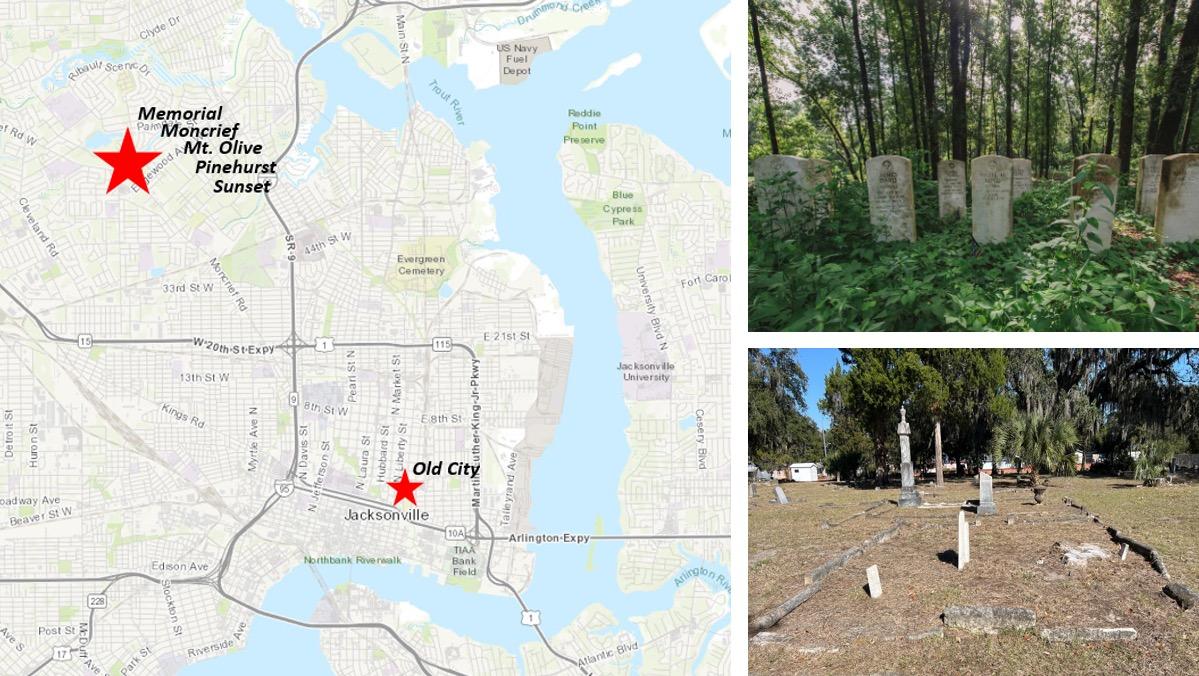
Patricia Davenport-Jacobs, Architectural Conservator with Terracon Jacksonville has a large collection of African American cemeteries
Unfortunately, some were redeveloped on or destroyed, several are designated local landmarks with ongoing preservation projects
City of Jacksonville appropriated $10 million for improvements for citymaintained cemeteries
• Cluster of African American Cemeteries NW of Downtown/Moncrief: Memorial, Pinehurst, Mt. Olive, and Sunset Memorial Cemeteries (early 1900s associated with Afro American Life Ins. Co.)
• Old City Cemetery is the oldest in the City dating to the 1800s with segregated sections
• Project collectively is over 60 acres and 13,000 burials


Case: Jacksonville Cemetery Conditions


All work began with conditions assessment for each cemetery:

• Identifying/marking burial plots
• Research/history (original plans/plots)
• General condition review, inventory documentation
• Environmental: Trees/landscape surveys, wetland identification, flooding risks and drainage analysis

• General safety/accessibility reviewed
• Recommendations (remediation/conservation and cost est.)
• Mapping and reports to document work

Cleanup and Clearing at Sunset Memorial




Case: Jacksonville’s Old City Cemetery


• Old Cemetery Restoration nearly complete
• Oldest major formal cemetery in the City that developed ca. 1850s
• Serves as “Living Museum” of the City of Jacksonville

• Segregated by Race, Religion and Military Service
• Approximately 10 acres with nearly 3,000 burials


Several notable residents buried here
• Dr. Alexander Darnes (1840-1894) the first African American Doctor in Jacksonville
• African American Military Veterans including Union Army members
Historic plat
Modern aerial
Case: Old City Cemetery Conditions
• Comprehensive conditions assessment with mapping and recommendations (priority rating)
• 2,500 burials were surveyed
• Issues: dead trees, vegetation, shifting soils, settlement, water runoff, neglected maintenance, natural deterioration, and vandalism

• Work included tree maintenance, cleaning (biological growth), repair cracked/broken stones, resetting stones/brick, repointing, safety improvements, and additional recommendations (interpretive signs)

• Historical (intentional) plantings only removed if necessary

Case: Old City Cemetery Priorities




Priority 1: Biological Growth, Vegetation, Soiling - 1,496 sites (60%)

Priority 2: Leaning, Failed but Stable, Staining - 675 sites (27%)
Priority 3: Fallen but stable, Cracked, Requires Attention - 270 sites (10%)
Priority 4: Broken, Leaning or fallen and unstable, Requires Immediate attention - 68 sites (3%) 60%

Case: Old City Cemetery Photos - Cleaning



Before After

Case: Old City Cemetery Photos – The Work






Case: Jacksonville’s Pinehurst Cemetery

Pinehurst Cemetery Restoration was completed in Fall 2020
• Pinehurst was established early 1900s as a benefit offered by the Afro-American Life Insurance Company.
• Military Service members are buried here
• It has been abandoned for decades, and the City of Jacksonville has taken over maintenance.
• Completed a Conditions Assessment and then moved on to Restoration during the second phase.


• Markers were repaired, reset, and cleaned as needed. Some vaults had been compromised, exposing remains, and these were replaced.
• The work also included tree pruning and removal, better definition of the original path through the cemetery, and debris removal.
1928 plat
Case: Pinehurst Cemetery Tree Coverage
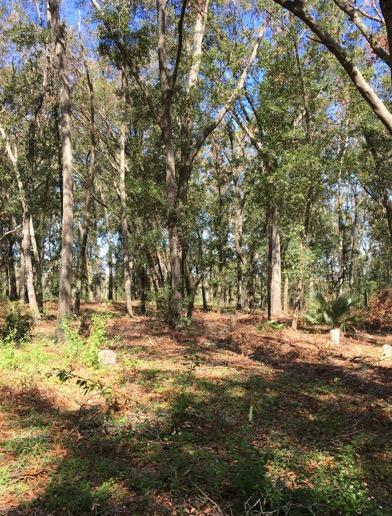
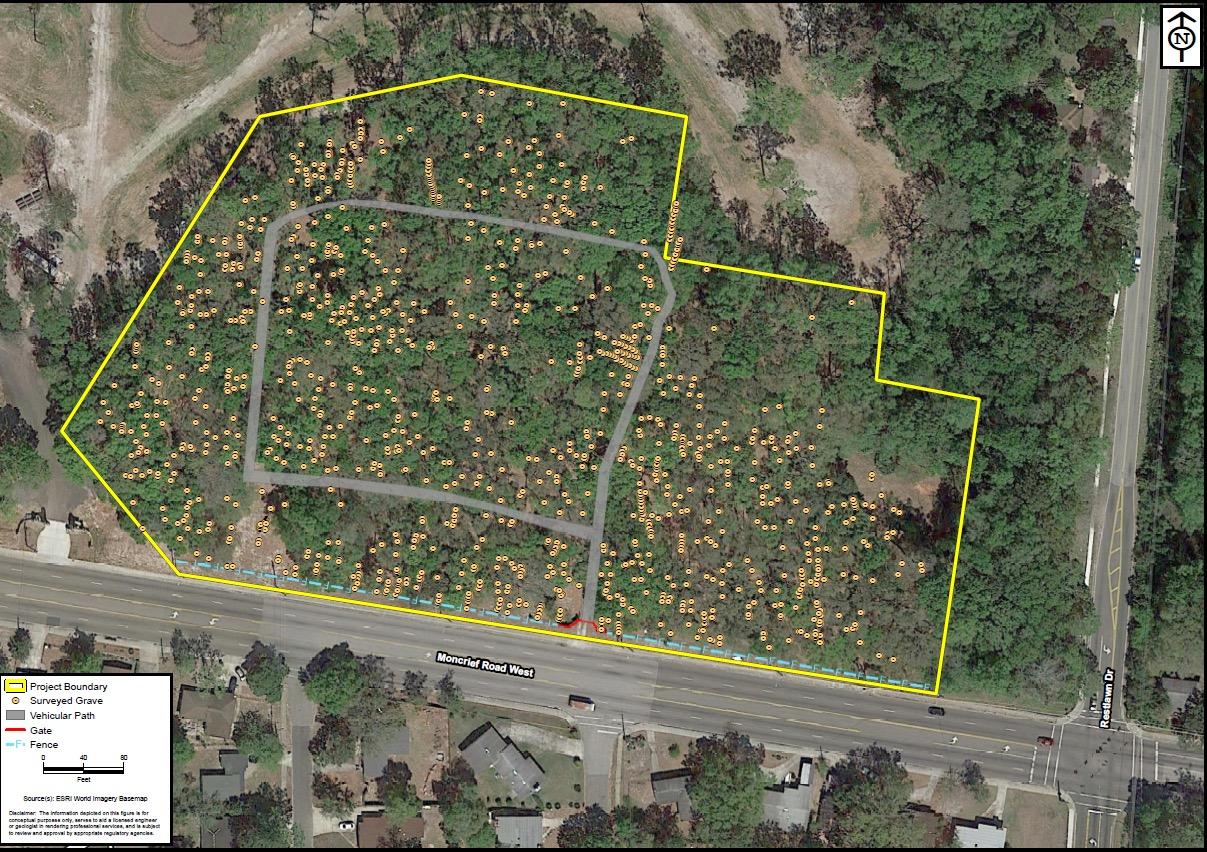



Case: Pinehurst Cemetery



Headstone reassembly process

1 2 3 4 5 6
Importance of Local History and Preservation
Community Input as part of Preservation efforts


• Consider Ethnic Heritage and Cultural Landscapes

• Understanding burial traditions and practices
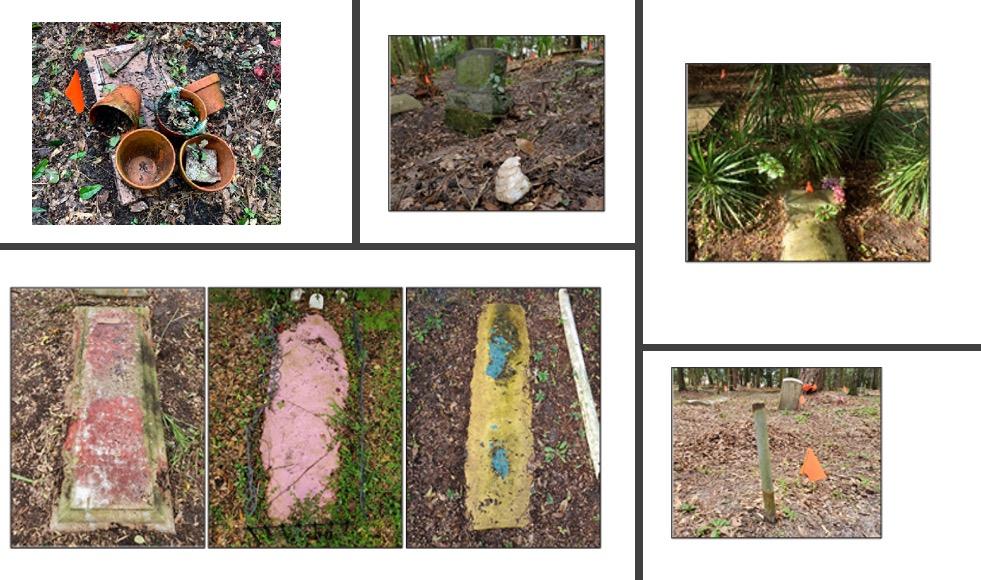
• Historic context is essential to understanding the significance of these cemeteries to the communities

• Many have special plantings, offerings and various traditions like metal pipes and painted vaults.

• Remember: Many religions and cultures have differing practices.

Professional Conservation

Terracon used a team of arborists, GIS specialists, scientists, archaeologists, historians, conservators, and artists

Importance of using volunteers (trained) and professional services
Need professional conservators (special care for delicate or fragile resources)
Must have experience with various monument types and materials (metals, granite, marble, zinc, sandstone)
Proposed treatments are in accordance with:
• Standards of Practice and Code of Ethics of the American Institute for Conservation Historic and Artistic Works (AIC)
Follow best practices for cemetery conservation. This includes guidelines as provided by:


• National Park Service (NPS),
• Cemetery Resource Protection Training (CRPT) as provided by the Florida Public Archaeology Network
• Department of Veterans Affairs (VA), where applicable.
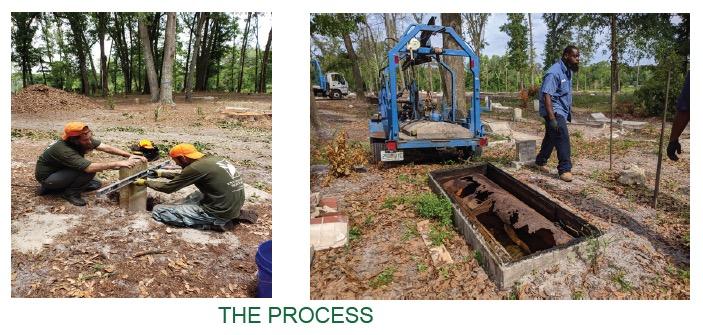
Florida Public Archaeology Network (FPAN)



http://www.fpan.us/





























































